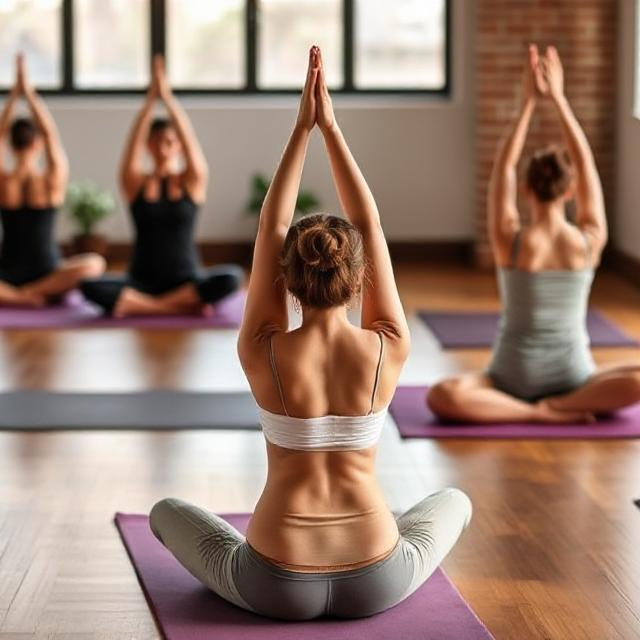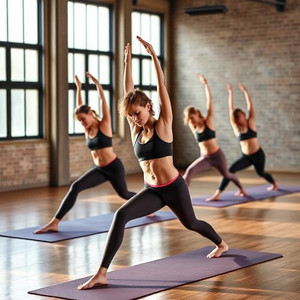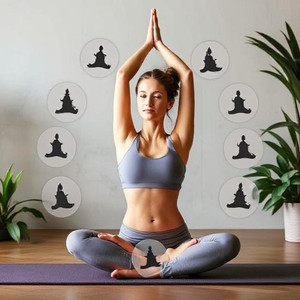Yoga styles has grown in popularity worldwide, with a multitude of styles catering to various physical abilities, fitness levels, and mental states. It offers an exceptional range of benefits, from physical strength and flexibility to emotional balance and mental clarity. With so many types of yoga to choose from, it can be overwhelming to know where to start. Whether you’re looking to reduce stress, improve flexibility, or build strength, there is a yoga style tailored to suit your unique needs. Below are the top 10 yoga styles for every body and mind.
1. Hatha Yoga
Hatha yoga is one of the most traditional and well-known yoga styles. It’s often considered the foundation of all other yoga practices, especially in the Western world. The term “Hatha” refers to the practice of physical postures (asanas) and breathing exercises (pranayama) designed to bring balance to the body and mind. This style of yoga is slow-paced and gentle, making it ideal for beginners or those looking for a more relaxed experience.
Hatha yoga classes generally focus on fundamental poses, breathing techniques, and mindfulness, allowing participants to connect with their body and breath. With its emphasis on alignment and relaxation, Hatha yoga can help improve flexibility, build strength, and reduce stress. For individuals new to yoga, Hatha is a great starting point to familiarize yourself with basic poses and breathing techniques.

2. Vinyasa Yoga
Vinyasa yoga, often referred to as “flow” yoga, is a dynamic and fluid style that links breath with movement. In a typical Vinyasa class, practitioners move through a series of postures that flow seamlessly from one to another, creating a rhythmic and energizing practice. The focus is on synchronizing the breath with each movement, which helps to build heat, increase flexibility, and promote strength. Vinyasa yoga is known for its creative sequencing, so no two classes are ever the same.
t offers a more fast-paced and intense practice compared to Hatha yoga, making it ideal for those who want to build endurance, flexibility, and strength while incorporating mindfulness into their workout. Vinyasa yoga is suitable for practitioners of various levels, though it’s a great choice for those looking to challenge themselves and elevate their physical fitness.

3. Ashtanga Yoga
Ashtanga yoga is a more structured and rigorous style of yoga that follows a specific sequence of postures practiced in a precise order. It is characterized by a flowing series of poses combined with controlled breathing, which creates a heat-building effect in the body. Ashtanga yoga is a dynamic and physically demanding practice that emphasizes strength, flexibility, and stamina.
It consists of six series of poses, each more challenging than the last, making it suitable for those who are looking for a more intense and disciplined practice. The consistent nature of Ashtanga allows practitioners to track their progress and work toward mastering each sequence. For those seeking a highly structured and physically demanding practice, Ashtanga is an excellent choice.

4. Iyengar Yoga
Iyengar yoga focuses on precision, alignment, and the use of props such as blocks, straps, and blankets to help support the body and ensure proper alignment during poses. Founded by B.K.S. Iyengar, this style of yoga is known for its attention to detail and emphasis on holding poses for extended periods.
It is ideal for individuals with injuries or those seeking to deepen their understanding of yoga alignment. Iyengar yoga encourages practitioners to focus on the correct alignment of the body in each pose, which helps to build strength, flexibility, and stability. This methodical approach is also beneficial for those new to yoga or those who want to refine their practice. Iyengar yoga can be a great choice for individuals seeking a slower, more mindful practice that emphasizes precision and body awareness.

5. Bikram Yoga
Bikram yoga is a type of hot yoga that is practiced in a room heated to around 105°F (40°C). The practice consists of a set sequence of 26 postures and two breathing exercises, which are designed to improve strength, flexibility, and mental focus. The heat is meant to facilitate deeper stretching and detoxification by promoting sweating and improving circulation.
Bikram yoga can be challenging due to the high temperature, and it requires practitioners to be mindful of their hydration and energy levels. It is especially effective for those who enjoy intense, sweat-inducing workouts and want to enhance their cardiovascular health and flexibility. However, because of the heat, Bikram yoga is not recommended for those with certain health conditions, so it’s important to consult with a healthcare professional before starting a class.

6. Restorative Yoga
Restorative yoga is a slow-paced, therapeutic practice designed to promote deep relaxation and healing. In this style of yoga, practitioners use props such as bolsters, blankets, and blocks to support the body in various poses, allowing them to fully relax and release tension. Poses are held for several minutes to activate the parasympathetic nervous system, which triggers the body’s relaxation response.
Restorative yoga is an excellent choice for individuals dealing with stress, anxiety, or fatigue, as it provides a gentle, calming experience that encourages mindfulness and inner peace. It can also be helpful for those recovering from injury or illness, as it allows for a gentle, low-impact approach to yoga that promotes healing and restores energy. This practice is ideal for anyone looking to unwind and replenish their mind and body.

7. Yin Yoga
Yin yoga is a slow-paced style of yoga that involves holding passive stretches for extended periods, typically 3 to 5 minutes or longer. This practice targets the deep connective tissues, such as ligaments, tendons, and fascia, to increase flexibility and promote joint health. Unlike more dynamic styles of yoga, Yin yoga emphasizes relaxation and mindfulness, providing a meditative experience that encourages introspection.
Yin yoga is beneficial for individuals seeking to improve their flexibility, especially in areas that are often neglected in more active yoga practices, such as the hips, lower back, and thighs. It is also a great practice for those who want to cultivate patience and focus, as the long-held poses encourage mental clarity and emotional release.

8. Power Yoga
Power yoga is a vigorous and fitness-based style of yoga that focuses on building strength, stamina, and flexibility. It is based on the principles of Vinyasa yoga but with a more athletic and high-energy approach. Power yoga typically incorporates a faster pace and challenging poses that engage the core, arms, and legs, providing a full-body workout.
This style of yoga is perfect for individuals who want to build muscle tone, increase cardiovascular fitness, and improve endurance. Power yoga also emphasizes the importance of breath control and mindfulness, so it’s not just a physical workout—it’s also a mental one. This practice is ideal for individuals who are looking for a challenging and dynamic yoga experience that combines both strength training and flexibility.

9. Kundalini Yoga
Kundalini yoga is a spiritual and energetic practice designed to awaken the dormant energy at the base of the spine, referred to as “Kundalini.” This style combines physical postures, breathing exercises (pranayama), chanting (mantras), and meditation to facilitate spiritual growth and self-awareness. Kundalini yoga can be an intense practice, as it aims to elevate consciousness and bring about profound mental and emotional shifts.
The goal is to activate the energy centers (chakras) in the body, leading to greater balance and harmony. Kundalini yoga is suitable for those looking for a deeply transformative and spiritual experience, as well as those interested in exploring the mental and emotional aspects of yoga, in addition to the physical practice.

10. Prenatal Yoga
Prenatal yoga is a specialized style designed to support expectant mothers throughout their pregnancy. It focuses on gentle stretches, breathing techniques, and relaxation practices that help prepare the body for labor and delivery. Prenatal yoga classes are tailored to accommodate the physical changes that occur during pregnancy, such as weight gain and hormonal shifts.
This style of yoga helps relieve common pregnancy discomforts, such as back pain, swelling, and fatigue, while promoting overall well-being. It also emphasizes mindful breathing, which can help reduce stress and anxiety, and improve the ability to relax during labor. Prenatal yoga is a great way for expectant mothers to stay active, reduce pregnancy-related discomforts, and prepare mentally and physically for childbirth.

Each of these yoga styles offers unique benefits, making it easy to find one that suits your personal needs and goals. Whether you’re seeking strength, relaxation, flexibility, or spiritual growth, there is a style of yoga for every body and mind. By exploring these diverse practices, you can discover a style that enhances your physical fitness, promotes mental clarity, and nurtures your overall well-being.


